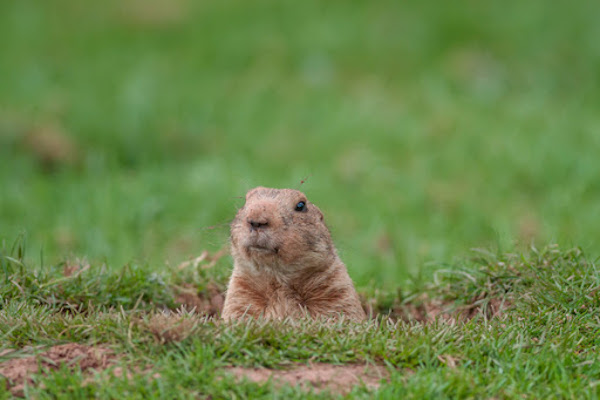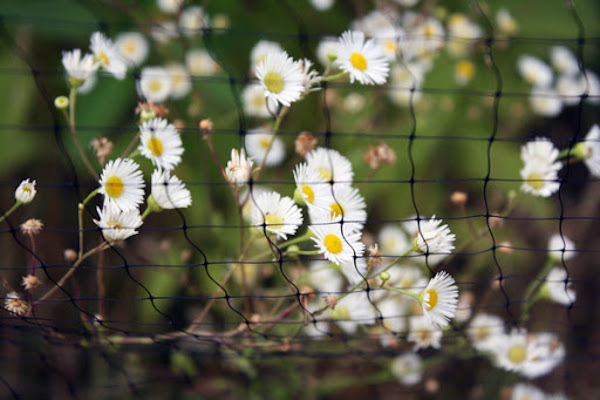Ok, so depending on where you live, you’ve probably never considered early February spring. And whether or not ol’ Punxsutawney Phil sees his shadow, we’re probably not done with freezing cold weather. Even if he doesn’t see his shadow, however, you’ll notice Punxsutawney Phil does wake up every year without fail. It’s not just him, either. Every groundhog wakes up starting right around now.
Every winter, groundhogs suddenly make themselves scarce. Then, starting in early spring, they return all at once, like they never left. They get right back to what they spent last spring and summer doing--digging up and eating your yard! Here’s where groundhogs go during the winter, why they’re waking up now, and how it can affect you. Look on the bright side: at least seeing groundhogs means spring is coming! ...Maybe!
Where were groundhogs this winter?
Groundhogs are one of the few true mammalian hibernators. Starting in October, groundhogs dig even deeper into their burrows, until they’re below the frost line. Then, after eating enough to store up their fat reserves, groundhogs enter hibernation. During hibernation, a groundhog’s metabolic activity slows down so extensively that they won’t need to eat or drink. Their heart rates slow down to around five bpm, and their body temperature falls to around 38 degrees Fahrenheit.
While hibernating, groundhogs survive solely on the fat reserves they spent the summer and fall accumulating. Most groundhogs can hibernate for up to five months at a time. If their fat reserves run low early, however, groundhogs may wake up prematurely to eat. Groundhogs typically hibernate in the deepest chambers of their burrows as possible to stay safe and warm. Long story short: groundhogs are underground sleeping this winter. If they burrowed into your yard this fall, then they’re probably sleeping nearby!

Why do groundhogs wake up in spring?
Groundhogs emerge from hibernation in very early spring, as soon as ground and air temperatures start rising. Usually, this happens in early February--around Groundhog’s Day, in fact! As soon as groundhogs wake up, they only have one thing in mind--and believe it or not, it’s not eating! Groundhog mating season begins as soon as the animals wake up in spring time. Male groundhogs wake up, emerge, and immediately start looking for female burrows nearby.
Spring mating season is one of the few times groundhogs will socialize. Mating takes place all spring. Female groundhogs give birth to two to six offspring after a gestation period of around 32 days. Baby groundhogs mature within three months after they’re born. During their first 3 weeks they rely on their mother for food. After three weeks, they begin foraging on their own. Starting around early fall, groundhog offspring will leave their mother’s burrows and begin digging their own. During winter they will hibernate, and then the cycle will begin again!
How groundhogs could affect you this spring
Shortly after they go looking for mates, newly-awakened groundhogs remember they haven’t eaten for five months. Groundhogs tend to forage and eat more than ever in spring, especially when they’re caring for newborn babies. Spring is also the only time of year that groundhogs live together. That means they’re inhabiting the same burrow and eating from the same food sources. If that burrow happens to be on your property, then multiple groundhogs could eat your yard at once.
Groundhogs are largely opportunistic herbivore foragers. They feed on a wide variety of grasses, twigs, plants, flowers, scrubs, and weeds. Adult groundhogs tend to eat over a pound of vegetation every day. Mother groundhogs may also pull up roots or grasses to bring to their offspring in burrows. During spring, groundhog feeding can inflict substantial damage on growing plants and flowers in your yard. They may even climb trees to access growing fruit or leaf buds.

How you can prevent groundhog damage this spring
First, try to keep your yard as clean and clear as possible. Clutter tends to accumulate in yards, especially over the winter. Groundhogs can feed on this clutter or use it as cover to move toward food sources. Keep your grass and bushes trimmed low. Remove weeds, fallen twigs, branches, and fruit, and any other sources of clutter. The more you expose the groundhogs around your yard, the less comfortable they’ll be feeding near you.
Next, you should exclude groundhogs from food sources. Put up wire mesh or chicken-wire fences around garden plants, flowers, and fruit trees. Make sure you build these fences a couple inches underground so groundhogs don’t simply dig beneath them. You could also try sprinkling epsom salts, cayenne pepper, or garlic near burrows or on the plants nearby groundhogs keep eating. Each of these taste bad to groundhogs and will help make their food sources unappealing. We recommend against attempting to trap groundhogs on your own, as it can be dangerous.
If you have a groundhog problem this spring, you should give the experts at Varment Guard a call. We have the tools and knowhow to locate and safely, humanely remove groundhogs from your property. Start your spring off the right way by protecting your growing yard today. Don’t worry--Punxsutawney Phil doesn’t hold grudges.






